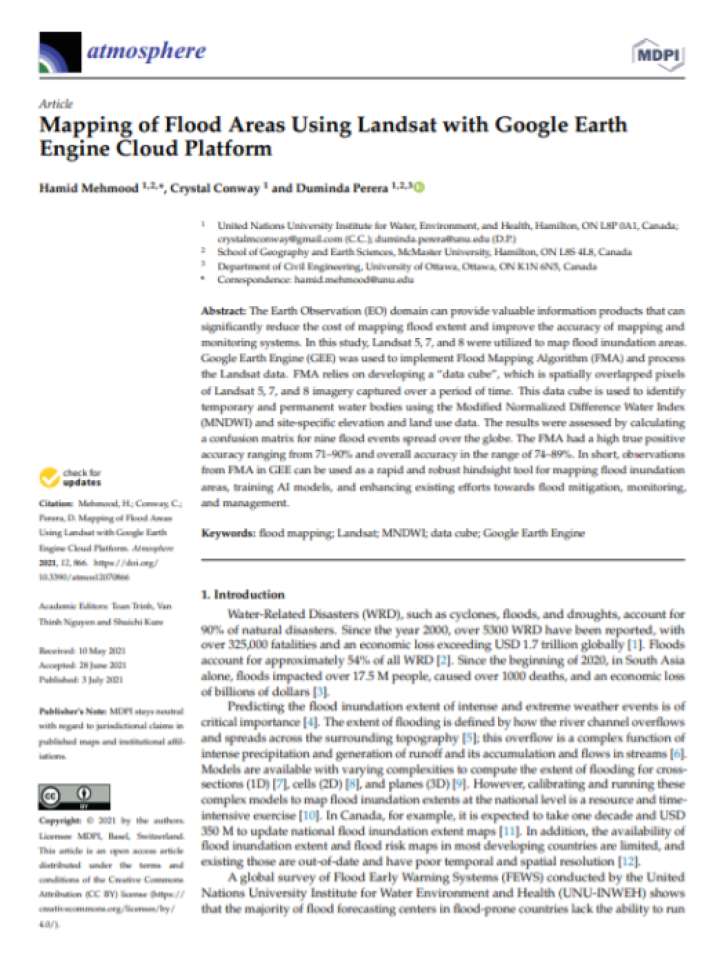Mapping of flood areas using Landsat with Google Earth Engine cloud platform
This study evaluated whether the Earth Observation (EO) domain can provide valuable information products that can significantly reduce the cost of mapping flood extent and improve the accuracy of mapping and monitoring systems. In this study, Landsat 5, 7, and 8 were utilized to map flood inundation areas. Google Earth Engine (GEE) was used to implement Flood Mapping Algorithm (FMA) and process the Landsat data. FMA relies on developing a “data cube”, which is spatially overlapped pixels of Landsat 5, 7, and 8 imagery captured over a period of time. This data cube is used to identify temporary and permanent water bodies using the Modified Normalized Difference Water Index (MNDWI) and site-specific elevation and land use data. The results were assessed by calculating a confusion matrix for nine flood events spread over the globe.
The study found that FMA can be an effective supplement to current inundation and flood risk maps, especially in the Global South, where data and technological gaps are common. FMA can also be used in an exploratory capacity prior to flood mapping, as it is significantly lower in cost, only requiring access to the internet and using open-source EO data. There are some limitations where the terrain influences the accuracy of the outputs, but these are easily characterized and can be further calibrated and accounted for with more event inputs. The FMA can be used to create historical flood inundation maps and potential flood risk maps. Room exists to improve this product with the addition of other remotely sensed datasets.
Explore further
